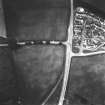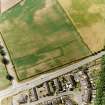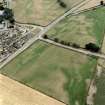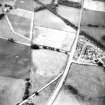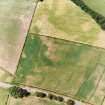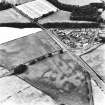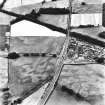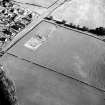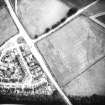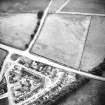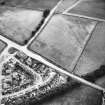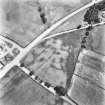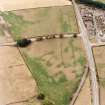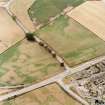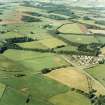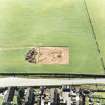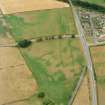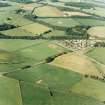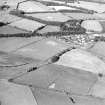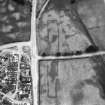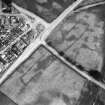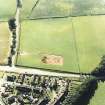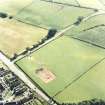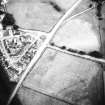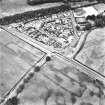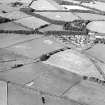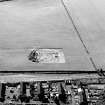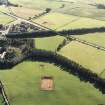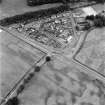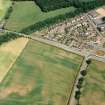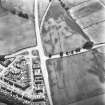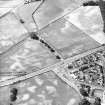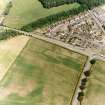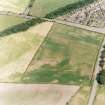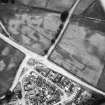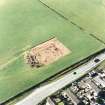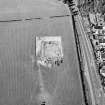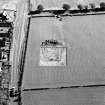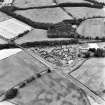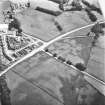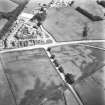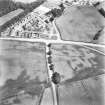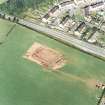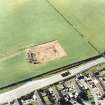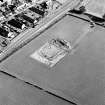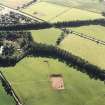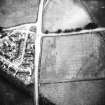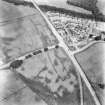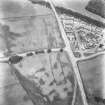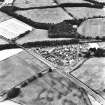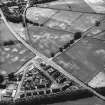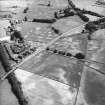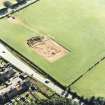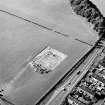Pricing Change
New pricing for orders of material from this site will come into place shortly. Charges for supply of digital images, digitisation on demand, prints and licensing will be altered.
Holywood
Ring Ditch (Period Unassigned)
Site Name Holywood
Classification Ring Ditch (Period Unassigned)
Canmore ID 65668
Site Number NX97NW 38
NGR NX 94862 79771
Datum OSGB36 - NGR
Permalink http://canmore.org.uk/site/65668
- Council Dumfries And Galloway
- Parish Holywood
- Former Region Dumfries And Galloway
- Former District Nithsdale
- Former County Dumfries-shire
NX97NW 38 94862 79771
See also NX97NW 23.
This ring-ditch is visible as a cropmark on aerial photographs and measures about 11m in diameter. It lies towards the N end of the cursus monument NX97NW 23, immediately N of a causeway across the ditch of the cursus.
Information from RCAHMS (ARG), 15 April 1998
X 951 802; NX 948 797 The Holywood cursus complex lies to the NW of Dumfries, and represents an important concentration of Neolithic field monuments. It is composed of two cursus monuments and a stone circle, the Twelve Apostles. There are also a number of minor features, which may represent ring-ditches, small enclosures, or ploughed-out mounds. Of the two cursuses, the southern example had squared terminals (NX97NW 23), while the northern one had rounded terminals (NX98SE 42). This difference in morphology may have chronological implications. Excavation in 1997 was intended to test the preservation of the monuments in the face of animal and agricultural damage over a very long period. As such, it was conceived as a sampling exercise. Large areas were opened to provide an extensive plan view of the monuments, but the total excavation of the features revealed was not contemplated. Rather, a number of features were selected, with the aim of acquiring representative sections, and samples for radiocarbon and environmental analysis.
At the northern cursus (NX98SE 42) , a cutting 60 x 40m in extent was opened over the northern terminal, while a smaller area was excavated to the S, in order to investigate an entrance in the side of the monuments. The cursus ditch was sectioned in six places, and in each case the basic sequence was one of a brief silting from the edge of the ditch, followed by a massive collapse of gravel, presumably from an internal bank, and above this a fine silting, which may have accumulated in a small recut in the top of the ditch. In the two cuttings on the eastern side of the cursus, the recut fills were sealed beneath a layer of iron pan, and this and the layer of degraded sandstone fragments above it rested on an unconformity with the earlier layers. Seemingly, a horizon of erosion preceded the renewed filling of the ditch, which may have been associated with a ploughing of the site. Numerous cut features lay within the circuit of the cursus ditch, most of these representing large post-holes. In some cases the remains of burnt posts remained, and sherds of earlier Neolithic pottery were recovered from a number of post-holes. It is likely that these posts represent a revetment for a gravel bank, which explains its catastrophic collapse into the ditch.
In contrast, the southern cursus (NX97NW 23) produced no evidence for bank revetment. Here a cutting 45 x 40m was opened, again over the northern terminal. A dump bank seemingly eroded slowly back into the U-shaped ditch. Such a bank must have covered a group of pits enclosed within the terminal of the cursus, which presumably pre-dated the monument. These contained complex fillings, much burnt material and earlier Neolithic pottery. A ring-ditch enclosed within the cursus was perhaps later in date, although it produced no dating evidence on excavation.
Geophysical survey was undertaken at the Twelve Apostles stone circle (NX97NW 19). This produced no indication of cut features within the circuit of the stones.
Sponsor: Historic Scotland
J Thomas 1998
Aerial Photographic Transcription (15 January 1990 - 12 December 1990)
An aerial transcription was produced from oblique aerial photographs. Information from Historic Environment Scotland (BM) 31 March 2017.
Aerial Photographic Transcription (1991)











































































